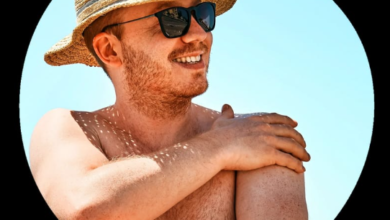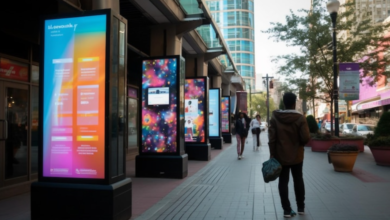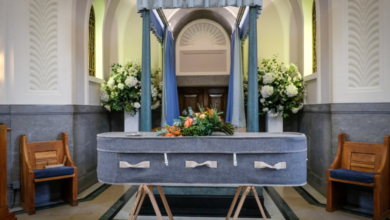
Mongolian Clothing: A Blend of Tradition and Modern Fashion
Mongolian clothes have long reflected the country’s very harsh climate and deep-rooted traditions. From freezing winters, clothes have been made to bear scorching summers for decades for survival and comfort.
Currently, around 25% of Mongolia’s population is still nomadic, depending on traditional clothes for protection and form of fashion.
So, how does this centuries-old fashion fit into today’s trend?
Mongolian clothing combines history, culture, and function. The everyday wear includes the traditional deel, strong leather boots and warm fur coats that are now modernized to serve as city wear and global fashion.
Thus, Mongolia’s heritage exists through this fusion of change.
Moreover, Mongolian clothing is a story of resilience, identity and fashion, whether they are worn in remote grasslands or modern streets. Understanding all these clothes helps one appreciate their importance.
What is Mongolian Clothing?
Mongolian clothing forms the country’s cultural identity as it is closely associated with the country’s nomadic way of life.
In Mongolia, nomads migrate over long distances, and their clothing is designed to meet the challenges of the constantly changing weather.
That said, traditional clothes are usually multilayered to defend against cold winds, snow, and the sun. One of the most famous traditional outfits is the Mongolian Deel, usually made from durable materials like wool or silk. Such clothes can resist the extreme climate of Mongolia.
Furthermore, Mongolian clothing is an important indicator of status and tradition. How a person dresses can indicate their social rank, profession, and family background.
Also, rich colors and intricate patterns are usually worn on special occasions, while simpler designs are worn daily. Nowadays, too, many Mongolians wear their traditional clothes, especially during festivals and important events.
With modernization, many people have blended traditional elements with modern fashion to create unique outfits that represent both the past and the present.
Traditional Mongolian Attires
Traditional Mongolian clothing is about functionality, just like it’s about style. Each garment has a particular role to play, and some of the clothing includes Mongolian boots, fur coats, and the Deel.
1. Mongolian Deel
The Deel is a traditional Mongolian outfit that consists of a long robe-like garment, fastening at one side with a belt. Material-wise, the Deel is usually made from wool, silk, or cotton, depending on the season. Thicker fabrics are used in winter to give warmth, and lighter ones are used in summer.
The Deel usually comes with bright colors and many intricate designs, symbolizing the wearer’s status. Furthermore, the Deel’s sleeves and neck can also be tightened up to help protect against the cold. Even the belt that goes around the waist gives the Deel style, holds the Deel in place, and helps keep warmth inside.

2. Mongolian Boots
Mongolian boots are another essential part of the traditional outfit. These leather boots are made to provide warmth and comfort. They are high-topped, thus allowing the legs not to feel cold wind and snow.
The boots’ design is also unique, including features like a pointed toe. Such a shape does not allow snow to clog the boots, which is very convenient for walking in deep snow. Moreover, the boots usually have different complicated patterns and can be blended with traditional and modern clothes.
3. Mongolian Fur Coats
A Mongolian fur coat protects from cold temperatures during the harsh winter. Often made out of sable fur, they are designed to hold body temperature inside the clothes and keep them warm.
Moreover, the thick fur is also an excellent windbreaker to protect against freezing winds blowing around Mongolia. These coats are generally worn on top of Deel and are considered the most important part of winter wear.
4. Mongolian Hats
The Mongolian hat is used for fashion and serves other purposes, such as protecting the head from the sun, rain, and snow. It is also called a “deel hat” made of felt. Furthermore, it is rounded and usually decorated with colorful patterns and symbols, while some have ear flaps that can be tied down to protect against the cold.
Presently, hats are worn for both traditional ceremonies and in everyday life. While the designs have been influenced by modern life, many Mongolian hats still reflect the past.

5. Felt Slippers
Felt slippers are one type of common footwear in Mongolia.
Slippers made of felt are durable and very warm. The slippers are worn indoors and are very suitable for winter seasons. They are colored with a variety of patterns and designs.
Being comfortable and lightweight, they are good to wear indoors.
See also: Pushing Bandages Beyond Boredom: Why First Aid Training Changed My Life
Modern Influence on Mongolian Clothing
Although traditional clothing remains important in Mongolia, modern fashion has begun influencing how people dress. You can feel the difference between traditional and Western attire in cities like Ulaanbaatar. In particular, young people prefer to mix modern fashion with the country’s traditional designs to look modern and fashionable.
Furthermore, modern materials such as polyester and nylon have also found their place in Mongolian traditional clothing. These fabrics are light and inexpensive, hence suitable for daily wear.
However, traditional materials like silk and wool are still preferred for special occasions. Fashion designers in Mongolia have also started experimenting with combining traditional components, such as the Deel and boots, with contemporary trends in fashion.

Conclusion
Traditional Mongolian clothes beautifully represent Mongolian history and culture.
Such traditional clothes, like deel, boots, and fur coats, perform their very basic functions, depicting the Mongolian people’s social status and tradition.
While Mongolian clothing has changed with the modern world, they combine old and new styles into unique, fashionable outfits as they still play a significant role in cultural events and ceremonies.




